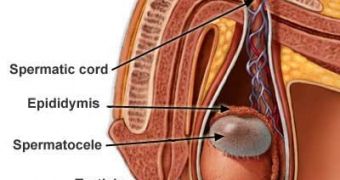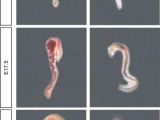You won't believe it, but our sperm cells travel up to 6 meters (20 ft) from the testes to the penis. This journey occurs mostly in the epididymis, a tightly coiled tube that enables the sperms to do what they have to do: fertilization.
A team at the University of Illinois has found a gene crucial for the development of the epididymis. "The findings are the result of a serendipitous discovery," said professor of veterinary biosciences Humphrey Hung-Chang Yao.
The researchers accidentally detected one mouse embryo with an epididymis that was a stunted, straight tube. "The lack of coiling had serious implications for the fertility of the mouse. If you take sperm directly from the testis and put it into the female reproductive tract, it won't swim. It won't be able to fertilize the egg. Going through the epididymis changes the biochemical properties of the sperm and helps it develop the energy-generating machinery that allows it to swim. So without this structure, under normal circumstances a male cannot be fertile." said Yao.
Initially, the team thought this was due to low testosterone levels, theory that was not confirmed. When the researchers investigated younger mouse embryos from the same parents, they detected the abnormality appearing in the epididymis between days 15.5 and 17.5. (the total gestation period in mouse is about 19 days)
Initially, the epididymis is integrated in the so-called Wolffian duct. At 13 days, inside the embryo, the Wolffian duct starts to differentiate into the tissue connecting testes and vas deferens, the epididymis being a part of it. But the normal path did not occur in the mutated mice.
The team already knew that the gene for one component of a growth factor, inhibin beta A, is overexpressed in the segment of the Wolffian duct that eventually forms the epididymis, and the gene's activity is boosted by high testosterone levels. Inhibin beta A enters the structure of a protein, activin, that triggers many processes in certain cells. The team detected that inhibin beta A was stimulating activity in the cells forming the walls of epididymal tube. The lack of inhibin beta A determined the stasis in these cells, they divided too slowly to lengthen properly the epididymis tube.
"This research adds to the evidence that while testosterone is the master switch that triggers the development of male reproductive structures, it doesn't work alone. Other studies had shown that testosterone works with other "regionally specific" factors to spur the development of structures such as the prostate gland or seminal vesicles. Inhibin beta A is the first such factor shown to contribute to epididymal coiling," said Yao.
"The identification of inhibin beta A in the development of the epididymis is important for understanding the basic biology of male sexual development. But it also provides new insight into male infertility," he explained.

 14 DAY TRIAL //
14 DAY TRIAL // 
